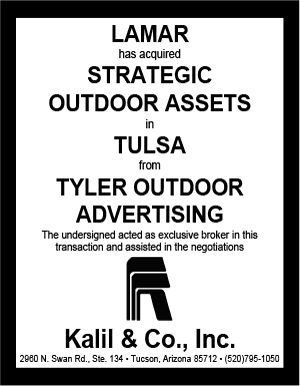
By Cedric Bernard, Adkom
After a year of such tremendous uncertainty, it may seem foolish to make any predictions for the future. Up until early 2020, out-of-home was expected to continue to grow at a breakneck pace due to a variety of factors. Better measurement and targeting capabilities, expanded aggregate network reach, and more programmatic interoperability all contributed to sustained increases in interest for the OOH medium.
For the non-programmatic ecosystem, flight minimums and advertisers’ need to pivot messaging at a moment’s notice became a dark shadow looming over OOH’s short-term prospects.
As 2020 comes to a close, these predictions are based on the trajectory of change we’ve already begun to experience. As an industry, OOH still has considerable potential to evolve and better accommodate buyers’ needs. As an advertising medium, brands have only just scratched the surface of possibility in terms of the value that OOH brings to their multi-channel strategy.
1. OOH Ad Spend Will Recover
There will be a gradual and consistent increase in spend from buyers as the confidence cycle returns. I won’t bother estimating whether 2021 will see a return to similar pre-COVID levels or exceed it, but indicators from reputable research validate that recovery across the OOH industry is well on its way.
OOH has demonstrated its value time and again, so now, it is just a matter of markets stabilizing and consumers resuming their daily routines that will determine when and where OOH will have the greatest impact.
It’s also important to note that while marketers may perceive a massive switch to remote work, only 19% of Americans work from home daily, with more people returning to their office every month.
The reality is that consumers who had been limiting their travel or were WFH will be eager to get outside in 2021. This increase in activity will be the perfect opportunity for advertisers who want to make up for losses in 2020 with engaging, persuasive OOH media.
2. Flexibility Will Be the Key to Success
Greater flexibility and agility are going to be necessary for OOH’s continued growth and success. Proving value simply isn’t enough. Programmatic buying addresses some of these challenges, but complex infrastructure and high budget requirements have led to slow adoption by buyers.
OOH providers need to offer buyers a simpler way to transact. For the past few months, restrictive cancellation terms and two-week flight minimums have been the source of endless frustration for OOH specialists, as they scrambled to change campaign plans to meet their advertisers’ evolving needs.
For the huge portion of OOH that is not transacted programmatically, we no longer live in a world where it’s realistic for all media to be purchased months in advance. Messaging can become less relevant or prove distasteful in the time that passes from booking to execution. Flexible solutions not only incentivize OOH for buyers but also ensure a reliable stream of revenue for media owners
3. National Advertisers Will Focus on Hyper-Local Buys
Hyper-local isn’t just for small businesses anymore. This year, we saw consumers spend more time in their communities, traveling shorter distances to shop, dine and get outside. In 2021, the cultural shift we experienced in 2020 will prove to have lasting effects, including in how national buyers enter local markets.
Hyper-local advertising can drive real results, particularly when it is executed at a national level. As the vaccine distribution rolls out, consumers will be ready to experience all the places in their communities that have been restricted or closed. By scaling a local advertising approach to a national campaign, marketers get the best of both worlds – engaging consumers as they go about their daily routines, while still reaching audiences across DMAs.
[wpforms id=”9787″]
Paid Advertisement
















